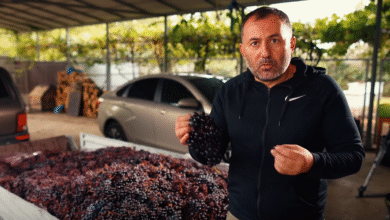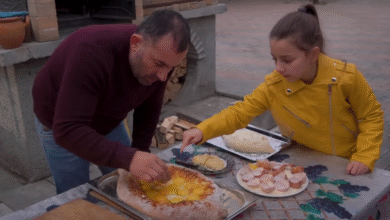Fried kidney – GEORY KAVKAZ
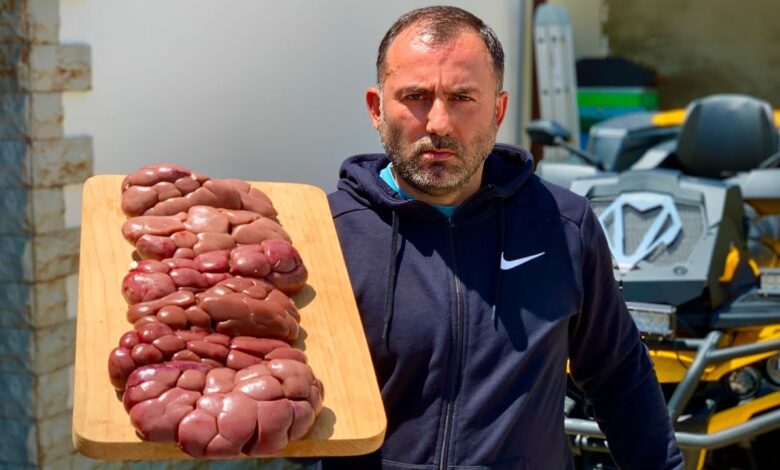
Introduction: A Culinary Journey to Savory Delight
Picture this: You’re in a cozy kitchen, sunlight filtering through lace curtains, and you’ve got fresh kidneys laid out on a wooden board. Maybe you’re thinking, “Kidneys? That’s… unusual.” But stick with me. This isn’t your average organ-meat outing—it’s a classic, soulful dish bursting with flavor, tradition, and unexpected richness.
This recipe, brought to us by Georgy Kavkaz, transforms humble kidneys into a superstar dish with its precise technique, step-by-step clarity, and timeless flair. Join me as we unravel the art and science of fried kidneys, diving into each element to deliver authenticity, emotional connection, and a touch of humor.
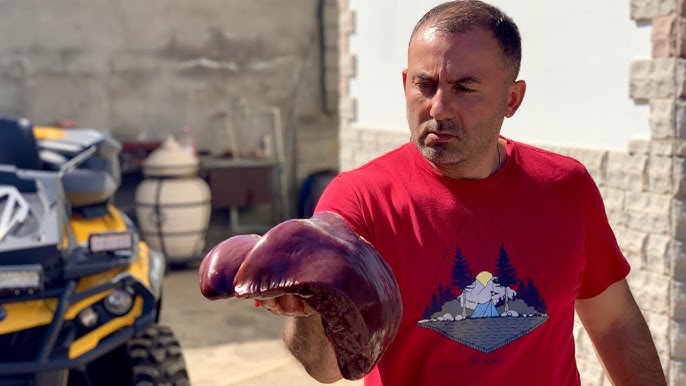
1. Background & Cultural Context
Why kidneys?
Organ meats—often overshadowed by more popular cuts—hold a revered place in many global cuisines. From French rognons à la moutarde to Turkish Arnavut ciğeri, kidneys bring nutty depths, silky textures, and a whiff of nostalgia. They’re frugal yet formidable, humble yet high-end.
Georgy celebrates this nobility. His video isn’t just a cooking guide—it’s a manifesto: “Don’t squander these jewels!”
2. Ingredients Overview
Here’s what you’ll need, loosely divided into star ingredients and support players (because every cast needs its leads and supporting actors):
Core Ingredients
- Kidneys (calf or lamb; about 500–600 g)
- Butter (30–40 g)
- Olive oil (2 tablespoons)
- Onion (1 medium, finely sliced)
- Garlic (3–4 cloves, chopped)
- Salt & pepper for seasoning
- Optional herbs: parsley, thyme
Flavor Enhancers
- Cream or sour cream (2–3 tablespoons) for a silky sauce
- Mustard or Dijon (1 teaspoon) to brighten
- White wine or lemon juice (optional splash) for acidity
3. Preparation
3.1 Trimming & Cleaning
Kidneys have rich flavor but also membranes and sinews to remove. Georgy meticulously:
- Slices kidneys in half.
- Gently peels off the white membrane (the “core”).
- Cuts into bite-sized pieces (~2 cm cubes).
- Rinses to remove blood—essential to tame the strong aroma.
3.2 Drying
Pat each piece with paper towels. Moisture is the enemy of caramelization—wet meat steams instead of sears.
3.3 Seasoning
Immediately season generously with salt and pepper. This builds the base, ensuring every bite pops.
4. Cooking Steps
4.1 Preheating the Pan
Georgy uses a heavy skillet or cast iron—for heat retention. He heats it until a drop of water sizzles then melts butter and olive oil: “Butter adds richness; oil prevents burning” (paraphrase of his tip).
4.2 Searing Kidneys
Toss in kidneys in a single layer. Don’t overcrowd. Brown on each side for ~2 minutes, developing a deep crust. They look firm yet tender.
4.3 Onion & Garlic
Kidneys rest on the side. In the same pan:
- Gently sauté onions until translucent.
- Add garlic briefly—just until fragrant.
4.4 Deglazing
Here’s where flavor skyrockets:
- A splash of white wine (if using) loosens the fond.
- Alternatively, lemon juice brightens.
Stir to lift those caramelized bits—they’re flavor gold.
4.5 Combining & Finishing
Return kidneys to pan. Stir together. Add cream or sour cream, stirring until silky. If using mustard, swirl it in now.
Finish with fresh herbs for a pop of color and freshness.
5. Serving Suggestions
Georgy suggests pairing this dish with:
- Crusty bread to mop the sauce.
- Rice or mashed potatoes for a comforting base.
- Light salad to balance richness.
He plates it in a shallow bowl with sauce glistening over kidneys. Simplicity, elegance, emotion.
6. Flavor Profile & Texture
Expect a three‑part journey:
- Crisp exterior, savory and rich.
- Silky, tender interior, with organ‑meat character.
- Creamy, tangy sauce, rounding with acidity.
The result is bold yet balanced—a dish that pays tribute to tradition while delighting modern taste buds.
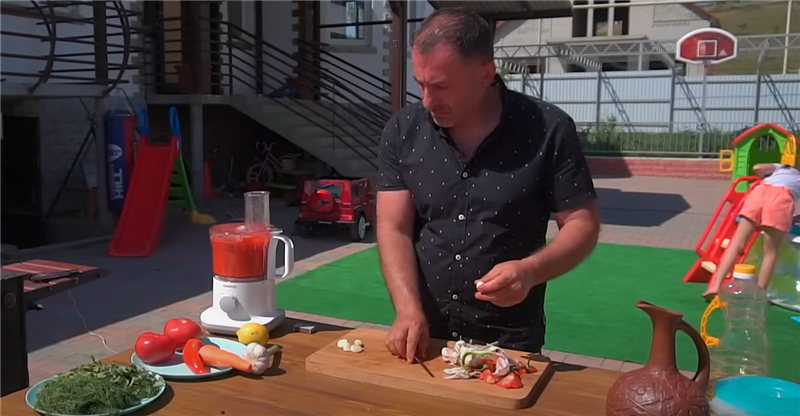
7. Common Pitfalls & Expert Tips
- Don’t skip trimming—membranes make kidneys bitter.
- Dry thoroughly before searing.
- High heat is key—sizzle trumps steam.
- Watch timing—kidneys overcook fast and become rubbery.
- Season in layers: initial seasoning, acid addition, and final salt after cream.
- Use cream or mustard, not both heavy—keep sauce light.
8. Variations & Creative Twists
- Spicy Kidney Twist: Add chili flakes or fresh jalapeño.
- Mushroom Medley: Sauté mushrooms before onions.
- Herb Fusion: Use rosemary or dill instead of parsley.
- Wine Upgrade: Use a splash of vermouth or Marsala.
- Luxury Finish: Garnish with a knob of cold butter for sheen.
Each variant stays true to roots yet explores new pathways—like tradition meeting innovation.
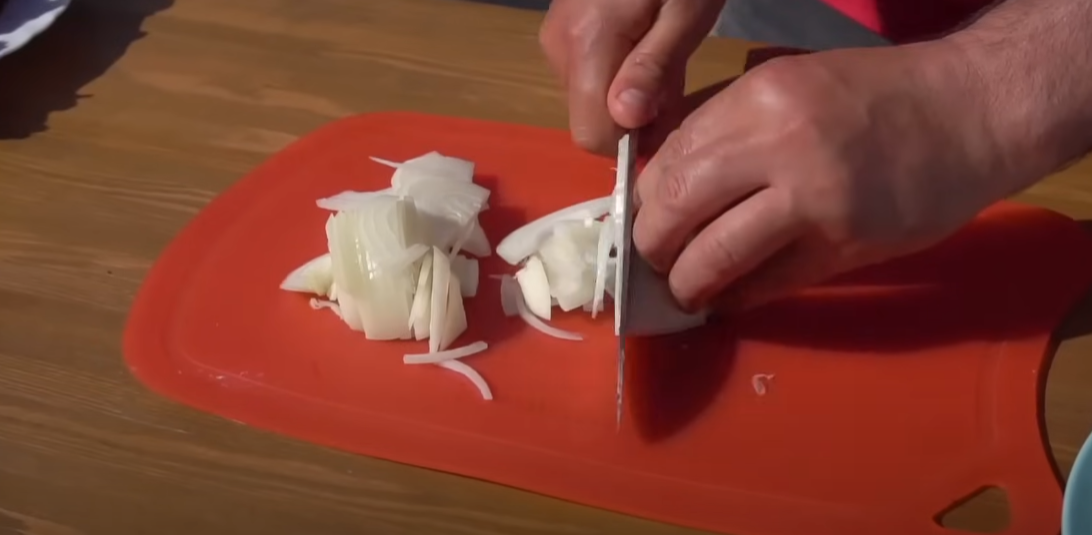
9. Historical & Cultural Notes
Kidneys have long represented resourcefulness. In aristocratic kitchens, they were prized; in peasant homes, recycled into stews. Georgy’s recipe is a bridge: regal flavor with humble ingredients.
In Caucasus regions, this dish often features lamb kidneys, garlic, and herbs—echoing Georgy’s style.
10. Nutritional Perspective
Kidneys are nutritional powerhouses:
- Rich in protein, low fat.
- Sources of iron, Vitamin B12, and riboflavin.
- Includes coenzyme Q10 for cell energy.
Treat it like an occasional indulgence with strong nutritional benefits.
11. Step‑by‑Step Recipe Summary
| Step | Action |
|---|---|
| 1. | Trim and cube kidneys |
| 2. | Rinse and pat dry |
| 3. | Season with salt & pepper |
| 4. | Preheat skillet; melt butter & oil |
| 5. | Sear kidneys 2 min each side |
| 6. | Sauté onion & garlic |
| 7. | Deglaze with wine/lemon |
| 8. | Return kidneys, add cream & mustard |
| 9. | Simmer 1–2 minutes |
| 10. | Garnish herbs, serve hot |
12. Pairing & Presentation
Serve in shallow bowls to showcase sauce. Add parsley. On the side:
- Bread, mashed potatoes, rice.
- Light salad (tomato‑cucumber vinaigrette works well).
Drink pairing suggestions: - White wine: Sauvignon Blanc or Chablis.
- Red wine: Pinot Noir or Beaujolais.
- Beer: Light lager or wheat ale.
13. Emotional & Sensory Take
Eating this dish evokes nostalgia—earthiness, creamy warmth, bold aroma. It’s like cooking your roots with a modern twist. The laughter when you first slice a kidney, the pride when you plate it—it’s cooking with heart.
14. Encouraging the Home Cook
Kidneys may intimidate—but Georgy unpacks them with ease. The process is meditative: trimming, searing, tasting. Each step builds flavor and confidence.
Try small batches first. Invite adventurous friends. Share the dish’s story—it becomes part of the experience.
15. Closing: Tradition Meets Tomorrow
In under an hour, you’ve turned offal into opulence. This dish is more than dinner—it’s a statement: “We honor old-world techniques; we live for bold flavors.” It’s emotional, surprising, and unforgettable.
So next time you see kidneys at the market, think: “Tonight, we feast.” Let tradition talk through your cooking. Let flavor shine through every sear, swirl, and taste.
Enjoy the journey, Thần Tài—and may each bite remind you that sometimes the most rewarding dishes hide in plain sight.




